Abstract
This work demonstrates how seemingly anonymous DNA database entries can be related to publicly available health information to uniquely and specifically identify the persons who are the subjects of the information even though the DNA information contains no accompanying explicit identifiers such as name, address, or Social Security number and contains no additional fields of personal information. The software program, REID (Re-Identification of DNA), iteratively uncovers unique occurrences in visit-disease patterns across data collections that reveal inferences about the identities of the patients who are the subject of the DNA. Using real-world data, REID established identifiable linkages in 33-100% of the 10,886 cases explicitly surveyed over 8 gene-based diseases.
Full text
PDF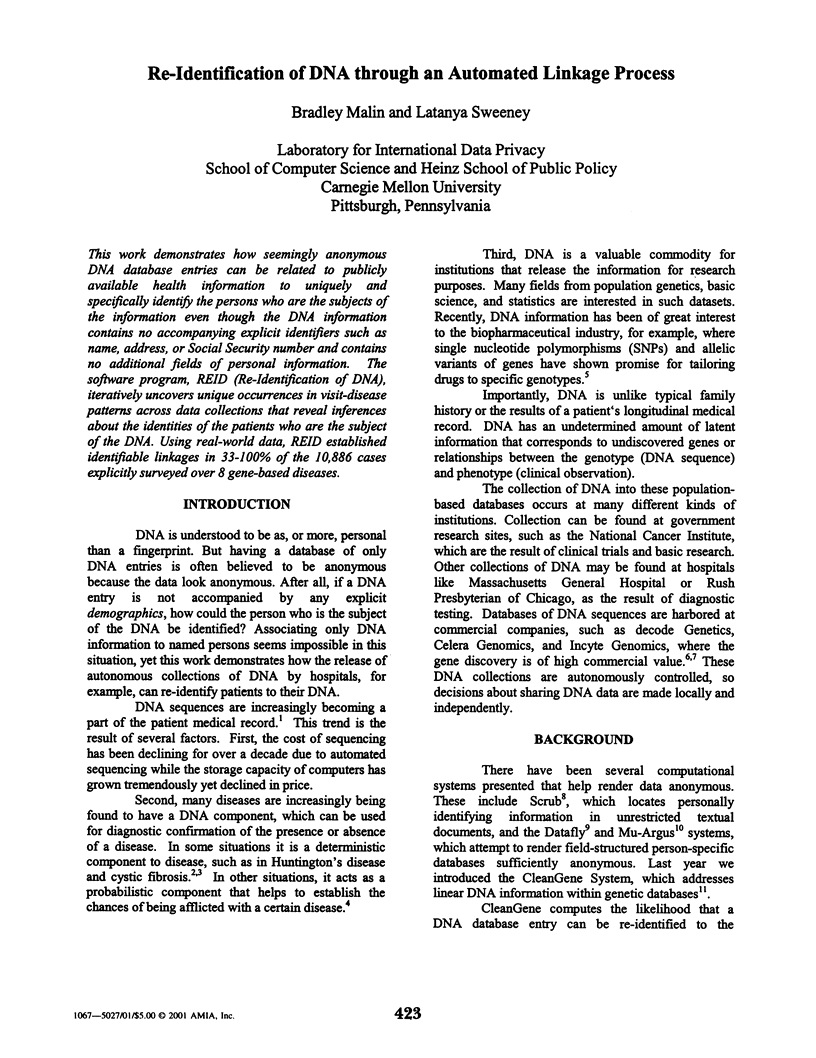
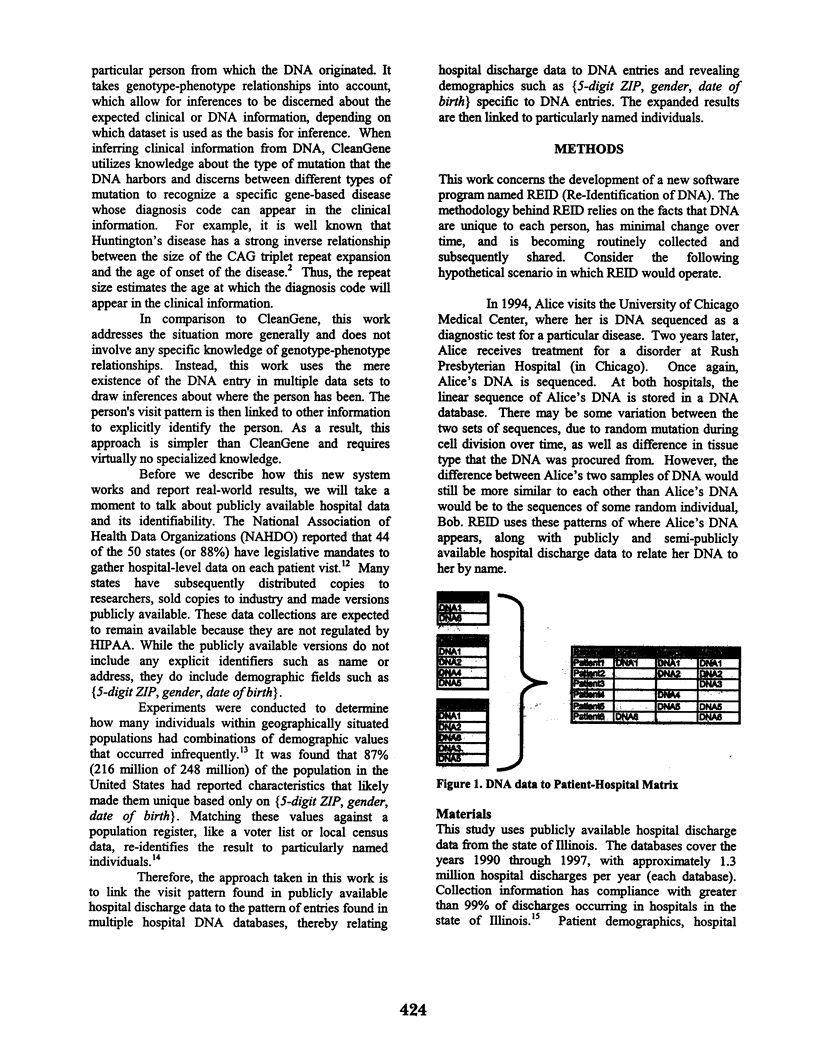
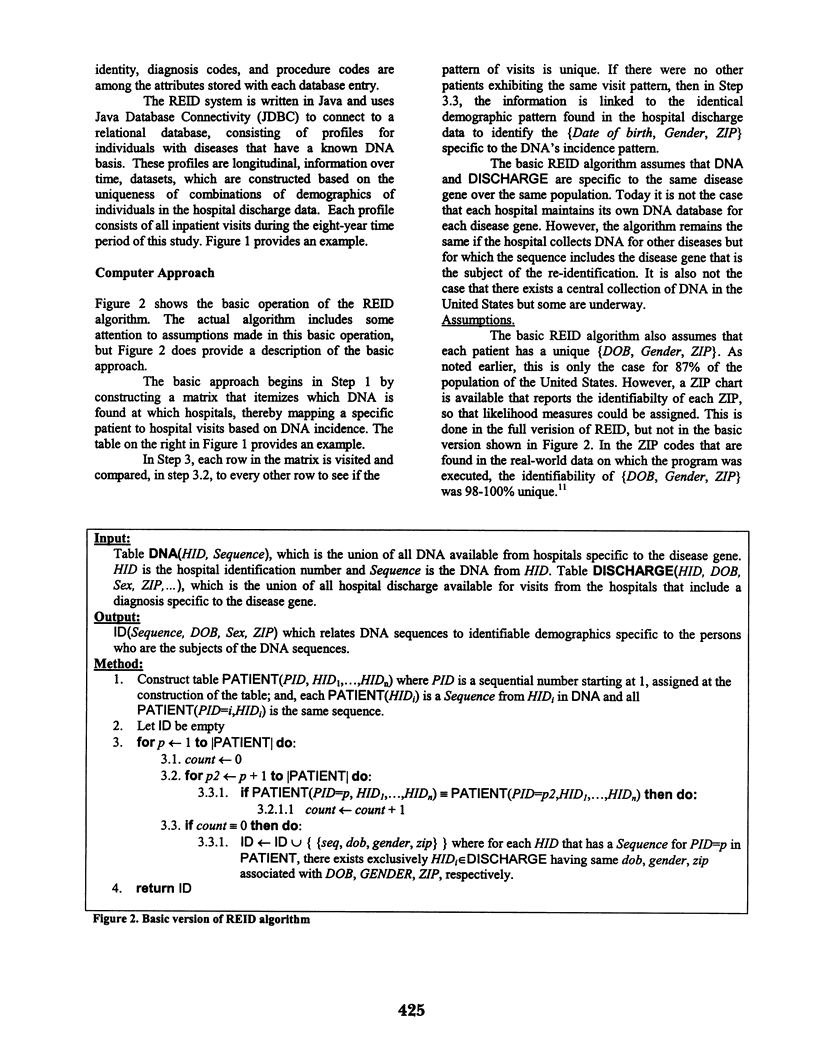
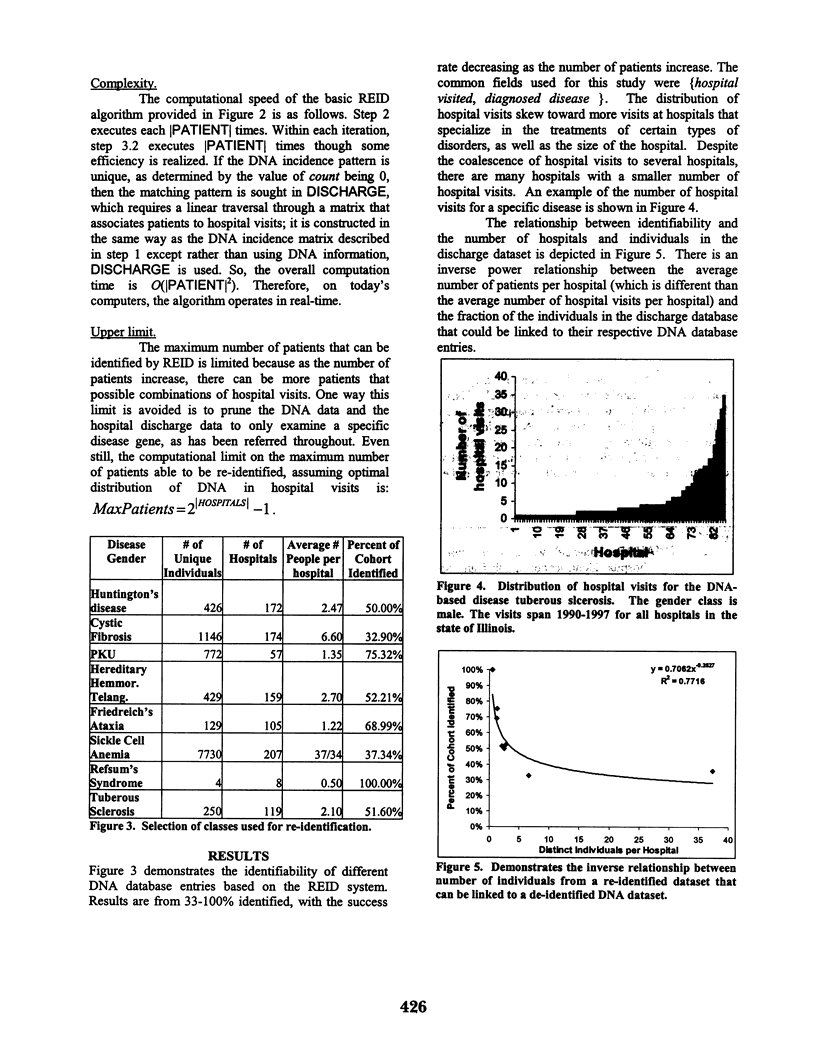
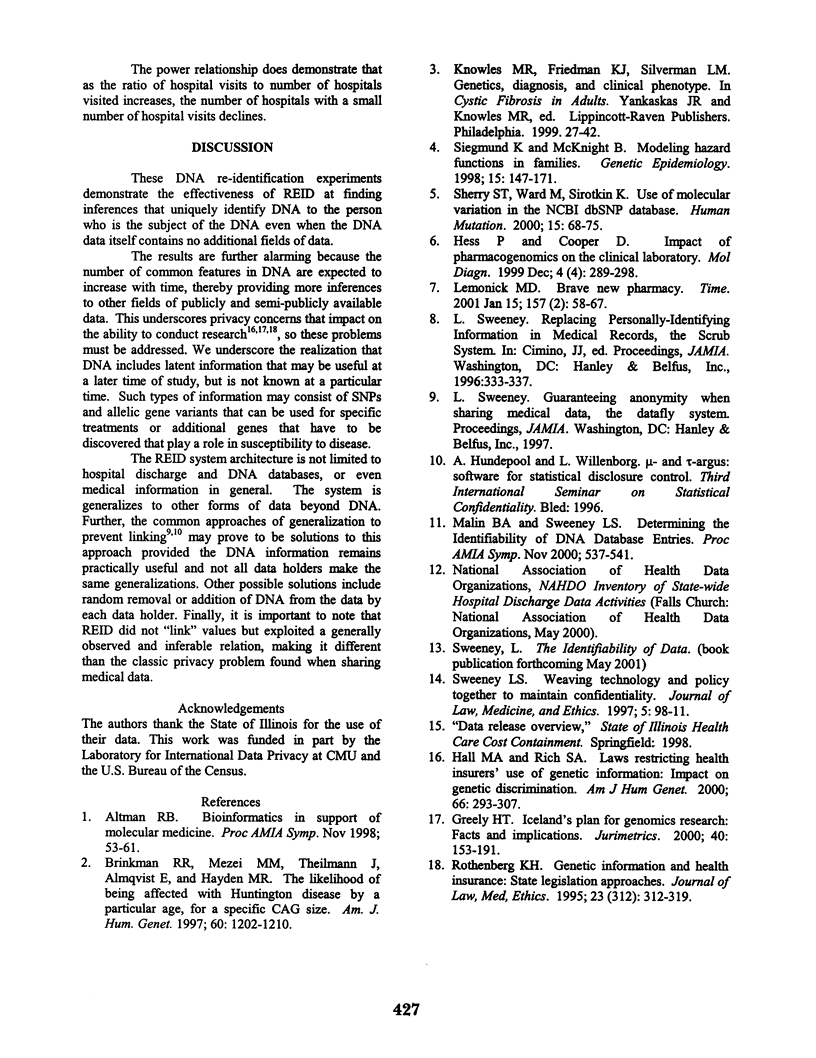
Selected References
These references are in PubMed. This may not be the complete list of references from this article.
- Altman R. B. Bioinformatics in support of molecular medicine. Proc AMIA Symp. 1998:53–61. [PMC free article] [PubMed] [Google Scholar]
- Brinkman R. R., Mezei M. M., Theilmann J., Almqvist E., Hayden M. R. The likelihood of being affected with Huntington disease by a particular age, for a specific CAG size. Am J Hum Genet. 1997 May;60(5):1202–1210. [PMC free article] [PubMed] [Google Scholar]
- Greely H. T. Iceland's plan for genomics research: facts and implications. Jurimetrics. 2000 Winter;40:153–191. [PubMed] [Google Scholar]
- Hall M. A., Rich S. S. Laws restricting health insurers' use of genetic information: impact on genetic discrimination. Am J Hum Genet. 2000 Jan;66(1):293–307. doi: 10.1086/302714. [DOI] [PMC free article] [PubMed] [Google Scholar]
- Hess P., Cooper D. Impact of pharmacogenomics on the clinical laboratory. Mol Diagn. 1999 Dec;4(4):289–298. doi: 10.1016/s1084-8592(99)80005-8. [DOI] [PubMed] [Google Scholar]
- Lemonick M. D. Brave new pharmacy. Time. 2001 Jan 15;157(2):58-66, 69. [PubMed] [Google Scholar]
- Malin B., Sweeney L. Determining the identifiability of DNA database entries. Proc AMIA Symp. 2000:537–541. [PMC free article] [PubMed] [Google Scholar]
- Rothenberg K. H. Genetic information and health insurance: state legislative approaches. J Law Med Ethics. 1995 Winter;23(4):312–319. doi: 10.1111/j.1748-720x.1995.tb01373.x. [DOI] [PubMed] [Google Scholar]
- Sherry S. T., Ward M., Sirotkin K. Use of molecular variation in the NCBI dbSNP database. Hum Mutat. 2000;15(1):68–75. doi: 10.1002/(SICI)1098-1004(200001)15:1<68::AID-HUMU14>3.0.CO;2-6. [DOI] [PubMed] [Google Scholar]
- Siegmund K., McKnight B. Modeling hazard functions in families. Genet Epidemiol. 1998;15(2):147–171. doi: 10.1002/(SICI)1098-2272(1998)15:2<147::AID-GEPI4>3.0.CO;2-3. [DOI] [PubMed] [Google Scholar]
- Sweeney L. Replacing personally-identifying information in medical records, the Scrub system. Proc AMIA Annu Fall Symp. 1996:333–337. [PMC free article] [PubMed] [Google Scholar]


